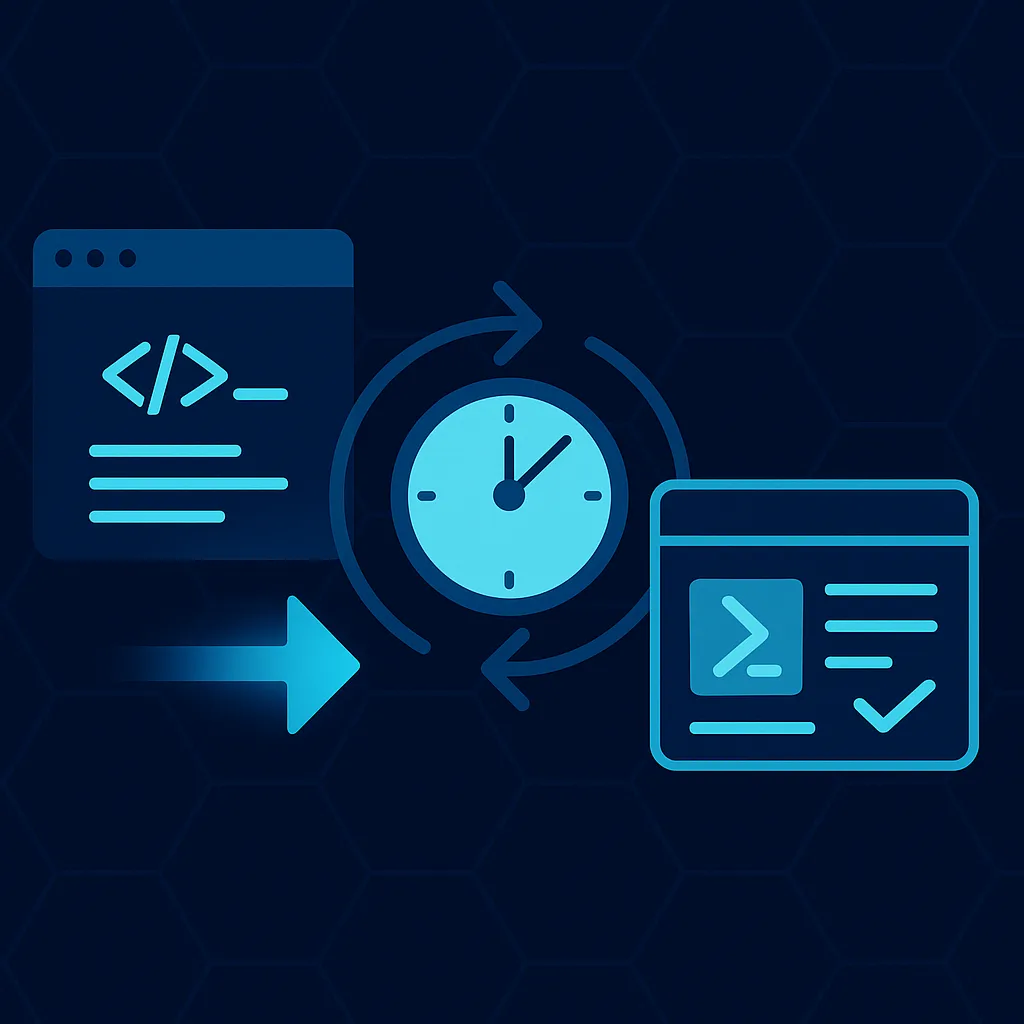Automating repetitive tasks in Windows is a cornerstone of system administration and IT efficiency. One of the most effective ways to ensure scripts run consistently is by scheduling them using Task Scheduler. While the GUI works, using PowerShell gives you more flexibility, scriptability, and scalability.
This article explores how to create, configure, and manage scheduled tasks using PowerShell—perfect for running scripts, backups, maintenance routines, or any task that benefits from automation.
Why Use PowerShell for Scheduled Tasks?
- Scriptability: Easily replicate or modify task settings.
- Automation: Deploy across multiple machines or automate task creation during system provisioning.
- Control: Configure fine-grained settings (triggers, conditions, credentials) with full transparency.
- Consistency: Avoid human error from GUI misconfigurations.
Basic Components of a Scheduled Task
A scheduled task generally consists of:
- Action – What the task runs (e.g., a PowerShell script).
- Trigger – When it runs (e.g., daily at 2 AM).
- Principal – The user context it runs under.
- Settings – Whether the task wakes the computer, handles missed runs, etc.
Step-by-Step Guide: Create a Scheduled Task with PowerShell
Let’s break down how to create a simple task that runs a PowerShell script daily.
1. Define the Action
This is what the scheduled task will execute.
$Action = New-ScheduledTaskAction -Execute "PowerShell.exe" -Argument "-NoProfile -WindowStyle Hidden -File C:\Scripts\Backup.ps1"
-Execute: The executable, in this case PowerShell.-Argument: Passes parameters to PowerShell (like script path, execution flags).
2. Define the Trigger
Specify when the task should run. For daily execution:
$Trigger = New-ScheduledTaskTrigger -Daily -At 3am
Other trigger options include:
-AtStartup-Once -At "6:30PM"-Weekly -DaysOfWeek Monday,Wednesday -At 2am
3. Define the Principal
Determine the user account context. If you’re running it as the current user:
$Principal = New-ScheduledTaskPrincipal -UserId "DOMAIN\UserName" -LogonType Password -RunLevel Highest
-RunLevel Highestensures administrative privileges if needed.- You may be prompted for a password if the user account requires it.
4. Register the Task
Now, put everything together and register the task:
Register-ScheduledTask -TaskName "DailyBackup" -Action $Action -Trigger $Trigger -Principal $Principal -Description "Performs daily backups using PowerShell"
Example: One-liner for Quick Daily Task
If you’re working interactively and want a quick one-liner:
Register-ScheduledTask -TaskName "QuickTask" `
-Action (New-ScheduledTaskAction -Execute "PowerShell.exe" -Argument "-File C:\Scripts\CleanTemp.ps1") `
-Trigger (New-ScheduledTaskTrigger -Daily -At 6am) `
-User "DOMAIN\UserName" -Password "YourSecurePassword"
Note: Storing passwords in plaintext is not secure. Consider using managed service accounts or credential vaults for production tasks.
Advanced Scheduling Features
| Feature | Description |
|---|---|
| Repetition | Run task every X minutes within a time window: -RepetitionInterval (New-TimeSpan -Minutes 15) |
| Start When Idle | Use -Settings (New-ScheduledTaskSettingsSet -StartWhenAvailable) |
| On Workstation Unlock | New-ScheduledTaskTrigger -AtLogOn -User DOMAIN\User |
| Conditions | Use New-ScheduledTaskSettingsSet to define idle time, battery settings, etc. |
Viewing and Managing Existing Tasks
List Tasks
Get-ScheduledTask | Where-Object TaskName -like "*Backup*"
Export a Task to XML
Export-ScheduledTask -TaskName "DailyBackup" -TaskPath "\" > "C:\Tasks\DailyBackup.xml"
Delete a Task
Unregister-ScheduledTask -TaskName "DailyBackup" -Confirm:$false
Best Practices
- Use descriptive names for tasks and log outputs.
- Test manually before registering a new task.
- Avoid storing plaintext passwords; use Group Managed Service Accounts where possible.
- Log script output so you can verify task success or troubleshoot issues.
- Back up your scheduled tasks using export or scripts, especially in multi-system environments.
Troubleshooting Tips
| Problem | Suggestion |
|---|---|
| Task not running | Check permissions, especially if using Highest privileges |
| Script runs but fails silently | Redirect script output to a log file |
| “Last Run Result: 0x1” | Often means incorrect path or argument; double-check syntax |
| No logs | Ensure PowerShell script has logging or output statements |
Conclusion
Creating scheduled tasks via PowerShell is a powerful way to automate system maintenance, backups, reporting, and other recurring tasks. With simple commands, you can script everything from daily routines to complex workflows—scalable across environments and easy to modify or replicate. Whether you’re a sysadmin or DevOps engineer, knowing how to manage scheduled tasks via PowerShell is a vital skill in modern Windows environments.


